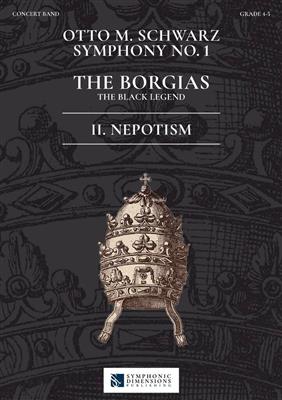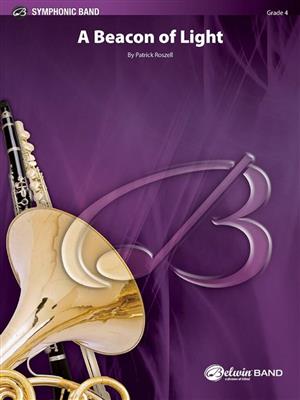Results
-
 £89.99
£89.99The Leaves Are Falling - Warren Benson
Distinguished composer Warren Benson has contributed a wealth of significant literature to the band repertoire. 'The Leaves Are Falling' is undoubtedly one of his best known, and now is once again available in this new edition from Hal Leonard.
Estimated dispatch 7-14 working days
-
 £159.99
£159.99The Spirit of Winnipeg - Georges Sadeler
During the last ice age, Glacial Lake Agassiz was the largest lake in the world, spanning vast areas of Canada and the USA, with numerous lakes forming in its basin, including Lake Winnipeg. The beginning of this composition illustrates how the ice of the prehistoric glacier slowly melts, drop by drop, signaling the end of the ice age. Vegetation in Canada begins to flourish once again, and the first rays of a new era illuminate the majestic Lake Winnipeg. Life reawakens as Canada's indigenous people sing their sun dance, traverse the prairie on horseback, and engage in hunting. The conclusion of the composition pays tribute to this splendid, shimmering Lake Winnipeg and its indigenous inhabitants.
Estimated dispatch 7-14 working days
-
 £79.99
£79.99Hero - François Rousselot
Hero", a piece commissioned by the Orchestre d'Harmonie de Digoin, expresses the concept of heroism in its most comprehensive sense. The composition opens with a majestic introduction, where the rhythmic motif played by the brass section gradually fades, giving way to a more lively Allegro. A new theme unfolds through the skillful use of different tempos, keys, and timbres, culminating at the end of the composition in a grandiose finale.
Estimated dispatch 7-14 working days
-
 £63.99
£63.99In time! - Gerald Oswald
The composition tells a cheerful morning story from the perspective of an alarm clock. The alarm clock dutifully follows its task and wakes people from their slumber, occasionally having to overcome resistance. However, in the end, people recognize "in time" that the morning heralds a new, joyful day and marks a positive phase in life.
Estimated dispatch 7-14 working days
-
 £148.99
£148.99Symphony No. 1 - The Borgias - 2. Nepotism - Otto M. Schwarz
A sinister legend hangs over the Borgia family, a legend of corruption, abuse of power, orgies, sex and murder. These rumours proliferated especially during the papacy of Alexander VI, a descendant of the family, who was even called the Antichrist. On his death, contemporary witnesses reported that the devil himself prowled around the death chamber and a black dog run along the corridors of the Vatican as his emissary. One might say that this Borgia pope, who ruled together with his family with the greatest brutality, became demonised. Unscrupulousness, poison-toting, incest and other malice are to this day the hallmarks of this pontiff.2. NEPOTISMRodrigo Borgia was elected Pope on 11 August 1492. From the very start, the new pope was prepared to use any means to eliminate his opponents, either through the infamous 'Borgia poison' or by excommunication and execution. His son Cesare, who wanted little to do with the church, was appointed cardinal against his will. Alessandro Farnese, broth of Giulia Farnese, the Pope's mistress, also became a cardinal. Numerous Spaniards were brought into the country and were appointed to ecclesiastical posts. This infuriated the opponents of Alexander VI. The Dominican Girolamo Savonarola from Florence demanded the removal of the Pope. He was tortured and banned. Giuliano della Rovere wanted to convene councils to depose the Pope, which Alexander managed to prevent through artful political manoeuvrings. Through great brutality, brilliant political skill and power games, this pope was able to achieve his goal of leaving for his children a great legacy. Alexander VI constantly changed his allies and always acted unscrupulously to improve his financial situation and expand his sphere of influence. At the centre of the second movement of this work is the medieval hymn Dies Irae (Day of Wrath), which acts as a warning in the background condemning the Pope's actions.
Estimated dispatch 7-14 working days
-
 £122.00
£122.00Ouvertre in Es-Dur - Stephan Jaeggi
As part of the year 2023, dedicated to Swiss composers, the Swiss Wind Band Association has commissioned Gauthier Dupertuis to write a new orchestration of the Overture in E-flat major by Stephan Jaeggi. Indeed, an update of the instrumentation was necessary for the interpretation of this work with modern orchestras.Therefore, the orchestration that Gauthier Dupertuis proposes and which he wanted to be faithful to the original while meeting current standards, will allow today's orchestras to performthis piece of classical-romantic inspiration.Stephan Jaeggi was a Swiss composer and conductor who was born into a large family in Fulenbach (Canton of Solothurn) in 1903. He began playing the clarinet at the age of 13, then studied music at the Basel Conservatory and attended his military training with the Swiss Army Band. Thereafter, he became the conductor of several wind orchestras. In this role, and also that of a composer, Stephan Jaeggi went on to achieve great success. His early death in 1957 put a premature end to Stephan Jaeggi's creative life. All the more reason why his work lives on with unbroken power to this day.
Estimated dispatch 7-14 working days
-
 £87.50
£87.50An Ancient World - Adrian B. Sims
An Ancient World, by Adrian B. Sims, imagines the ruins of a past civilization. The work explores the mysterious and fascinating landscapes that were once so beautiful. Reawakened in a new light, the world reignites with energy. After a final mourning of that which was lost and can never be restored, (measures 95--130), the work lives out the essence of ancient royalty with one last celebratory musical statement.
Estimated dispatch 7-14 working days
-
 £53.95
£53.95Guiro Hero - Timothy Loest
Celebrate Latin music's colorful sounds and infectious rhythms in this lighter work by Timothy Loest, who puts the guiro front and center. Your audience will smile with each tap and scrape, and your students will gain an appreciation for world music. There's a new superhero in town--Guiro Hero!
Estimated dispatch 7-14 working days
-
 £87.50
£87.50A Beacon of Light - Patrick Roszell
A Beacon of Light, by Patrick Roszell, was written for and dedicated to Mr. Gene Inglis and his incredible 49-year career in music education. With lively melodies, a touch of jazz harmonies, and a beautiful setting of "Be Thou My Vision," this new contribution to instrumental literature will be a welcomed addition for contest and concert settings.
Estimated dispatch 7-14 working days
-
 £58.50
£58.50Cornerstone Celebration - Scott Watson
Cornerstone Celebration, by Scott Watson, is a musical outpouring of joy and gladness aimed at portraying what's best about the communities in which we live. Written in 3/4 meter, exploiting the Mixolydian mode, and employing a compelling, syncopated rhythm throughout, this piece will surely bring exciting and rewarding new sounds to your band. (2:20) (Correlates to Sound Innovations, Book 1, Level 6.)
Estimated dispatch 7-14 working days
